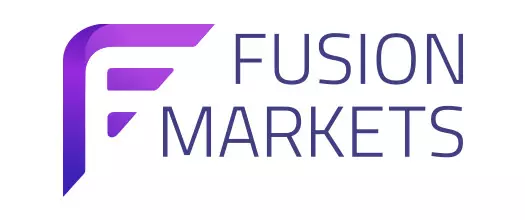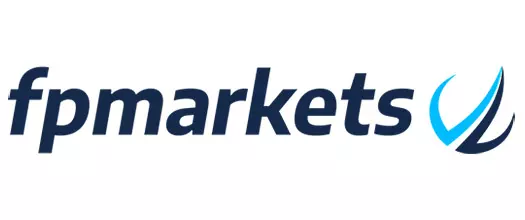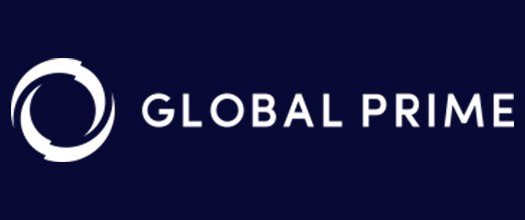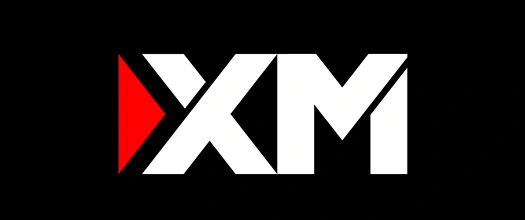- Jump to:
- Main features of the best Australia Forex brokers
- Forex Legislation
- Financial Regulators
- Payment Methods
- Trading Software
- Mobile Trading
- FAQ
Our team of expert traders tested many regulated and trustworthy forex brokers that accept traders from Australia and compiled a toplist with the best among them. Each broker operating in Australia received a quality score based on several factors, including Trustpilot rating, regulation, fees and commissions, available trading platforms, customer service and more.
 Fusion Markets74-89% of retail's CFD accounts lose money
Fusion Markets74-89% of retail's CFD accounts lose money FP Markets73.85% of retail investor accounts lose money
FP Markets73.85% of retail investor accounts lose money Global Prime74-89% of retail CFD accounts lose money
Global Prime74-89% of retail CFD accounts lose money Pepperstone75.5% of retail investor accounts lose money
Pepperstone75.5% of retail investor accounts lose money AxiThe vast majority of retail client accounts lose money
AxiThe vast majority of retail client accounts lose money XM Group72.82% of retail investor accounts lose money
XM Group72.82% of retail investor accounts lose money
Below you can find a comprehensive comparison table of forex brokers for traders in Australia. We rank them based on several factors including: regulation, spreads and commissions, Trustpilot rating, trading instruments, trading platforms, deposit and withdrawal methods.
Our team has thoroughly evaluated all brokers listed below using TradingPedia’s exclusive methodology.
Main features of the best Australia Forex brokers
- Brand
- Trading platforms
- Minimum deposit
- Regulations
- Trading instruments
- Spreads
- Leverage for Forex CFDs
- Leverage for Crypto CFDs
- Leverage for Indices CFDs
- Deposit methods
- Withdrawal Methods
- Commission per Lot
- Contact details
Foreign exchange trading, commonly referred to as Forex trading is thriving in Australia, largely due to the country’s liberal stance on brokers and trading services providers. This sector is adequately regulated by local authorities, which ensures high levels of safety and customer protection.
Its liberal, yet cautious regulatory environment has helped turn Australia into an appealing investment destination, attracting a huge number of trusted and reliable brokers over the past decades. Traders from this jurisdiction have a versatile choice from a variety of instruments, including foreign exchange, commodities, and leveraged derivatives.
If you are based Down Under and are considering joining the vast community of Forex traders, take some time to go through this article. Here you will learn all you need to know about local trading regulations, the payment methods you can use, and the trading software Aussies commonly prefer to use.
Australia Forex Legislation
Forex brokers who service traders from the country must operate in strict compliance with various regulatory policies that aim at protecting customers and minimizing the instances of scams and fraudulent activities.
Local legislation dictates that all brokers must hold valid licenses from the Australian regulator ASIC before they can cater to Aussie customers. The websites of brokerages that service locals without the regulator’s consent are proactively blocked.
Another policy stipulates that licensed brokerage firms must set up a representative office in the country, which increases accountability and instills higher trader confidence. All licensees are required to undergo regular audits. This furthers transparency and helps prevent fraudulent practices.
To protect Aussie traders, the local regulator requires brokerages to store customers’ money in segregated accounts. The brokers must show proof of this segregation to the regulatory body when requested. This way, if something causes the brokerage to file for insolvency, clients’ funds will remain intact. Aussie traders are further safeguarded through different insurance schemes and protection plans.
Each broker that applies for an Australian license must have operating capital of at least AU$1 million. On one hand, this guarantees the firm can withstand volatile fluctuations in the markets. On the other, it ensures the brokers can maintain the orders of its customers during volatile market events without increased risks of incurring debt due to the huge negative balances of the clients.
Aussie-friendly brokerages are expected to provide a quick and seamless trading experience via stable and highly efficient platforms. Traders from Down Under also have access to leveraged products like the contract for difference (CFD), which enables them to trade with more money than that deposited into their accounts.
For the time being, there are no official restrictions on the maximum allowed leverage for Aussie customers, although most trading platforms to service clients from the country have a leverage ceiling of 1:500.
Leverage can also be lower or higher depending on the individual customers’ account history. New registrants who open retail accounts with an Australia Forex brokerage can trade with significantly lower leverage than experienced professionals.
The type of instruments you trade with also affects the leverage ceiling. For example, leverage on cryptocurrency markets is usually significantly lower than that for foreign exchange and commodities.
The local regulatory body restricts credit card deposits to the amount of $1,000 when new Aussie customers first register accounts with licensed brokerages. Traders should also keep in mind they are expected to report their trading earnings as assessable income.
The losses are deductible as well. However, there are several exemptions under which this will not be necessary. Whether you are categorized as a “trader” or an “investor” also plays a role. You are recommended to get in touch with a tax professional if you are unsure about what precisely applies to your individual situation.
There is no minimum prescribed age for foreign exchange trading but most brokerages accept customers who are at least 18 years old. With that said, each registrant is required to provide various documents to confirm both their age and identity before they can start trading with real money.
Under local laws, underage Aussies cannot open bank accounts without the consent of parents or guardians, and you will still need to top up your balance. Thus, if you are 18 years old, you will have no other option but to restrict your trading activities to practice demo accounts only.
Australia Financial Regulators
Forex brokerages that cater to Australian customers are subjected to the rigorous oversight of the Australian Securities and Investments Commission, otherwise known as ASIC. ASIC was established back in July 1998. It operates under the provisions of the Australian Securities and Investments Commission Act of 2001.
ASIC has various areas of responsibility as it governs the sectors of financial services, derivatives, securities, and insurance. If an online brokerage is looking to operate on Australian soil, it must first file a license application with ASIC. This license acts as a guarantee to Aussie customers that the trading services provided are in full compliance with ASIC’s high standards for security and transparency.
The regulatory body runs an online register with its licensees where traders can find all the brokerages that fall under its oversight. This authority also deals with the resolution of disputes between customers and brokers. It constantly monitors its licensees and is quick to launch investigations if a brokerage company is thought to have deviated from its regulatory policies.
Australia’s second major regulatory body is the Australian Prudential Regulation Authority (APRA). Created at the same time as ASIC, APRA is tasked with the regulation of banking institutions, credit unions, and insurance companies.
We previously mentioned there are currently no clear-cut restrictions on leverage for Aussie brokers but this may change in the near future. ASIC took steps in this direction in the summer of 2019 when it proposed changes to the CFD and binary options markets that aim at aligning the Australian foreign exchange sector with the rest of the world.
One of the proposed measures concerns restricting maximum leverage limits, which will likely be decreased to 20:1 for currency pairs and the precious metal gold, 10:1 for all other commodities, 2:1 for cryptocurrencies, 5:1 for shares, and 15:1 for stock index trading. This applies to retail accounts only. Wholesale traders, i.e. professional traders, would be exempt from these restrictions if the changes are enforced.
The main motive behind the proposal is to protect inexperienced customers from incurring massive losses when trading with volatile leveraged products. Additionally, the regulatory body wants to prohibit trading with binary options for eighteen months, which is the maximum permitted timeframe under the law. The proposed changes are yet to come into effect.
Australia Forex Payment Methods
Aussie-friendly online brokerages typically enable new customers to set up demo accounts where they can build their experience and practice trading with free demo credits for a limited period of time.
However, if you are looking to trade for real money straight away, you will have to open a live account and meet its minimum capital requirements. In many cases, live accounts can be funded with as little as AU$100 although some brokerages might require larger investments of AU$500 or even AU$1,000. There are also micro accounts at some brokers where minimum deposits are AU$5 or so.
As for the available payment methods, Aussie traders can usually top up their accounts with credit or debit cards by Visa and Mastercard. Many consider this the fastest way to fund their trading accounts. As of May 2015, cards by UnionPay are also readily available to Australian citizens.
A significantly slower option is to load money to your balance via a bank wire transfer. You can initiate the transfer either in person by visiting your bank or via its online banking center.
Waiting time on bank transfer deposits vary between brokerages, but it generally takes around two days for domestic payments and three to five business days for international transactions. Many Australian brokerages lift the extra fees on deposits with bank transfers but traders may be charged additionally by their banks.
If you are unwilling to disclose your card or bank account information, you can always use e-wallets like Neteller or Skrill, which are readily available to Australian residents. The downside here is that such methods normally require you to undergo registration and account verification before you can take advantage of their full capabilities.
After signing up for Skrill or Neteller, you must load some money into your digital wallet. When depositing, you only need to provide your login credentials. The payment is made directly through the e-wallet platform, ensuring higher levels of security and anonymity.
Another alternative for Australian traders is to initiate a BPAY payment. This is a local electronic bill system that allows you to transfer funds to your balance directly through the mobile or online banking facility of your bank.
As for fees, most brokerages do not charge customers extra for payments but you might want to check the policies of your preferred broker just in case. Aussie-friendly trading websites enable clients from Down Under to register accounts with AUD as the base currency, sparing them from incurring additional fees for conversion.
You only need to beware of inactivity fees. If your account remains dormant for a specific period, typically between three and twelve months, there is a good chance your brokerage would deduct a maintenance fee from your balance each month.
Popular Trading Software for Australia
Australia-friendly brokerages usually offer Aussies a choice from several popularly used trading platforms, starting with the well-known MetaTrader 4 (MT4), courtesy of developer MetaQuotes Software. This platform has established itself worldwide, which can be explained with its ease of use and the variety of customization options it offers.
It gives you the ultimate control over your trading experience and helps you make better investment decisions through various tools for technical analysis. MT4 features dozens of technical indicators that allow traders to detect the latest market trends.
There is a variety of analytical objects, including Japanese candlesticks, broken lines, and bars that help you improve the efficiency of your trading. Furthermore, you can open positions directly through the charts. MT4 is also equipped with nine different timeframes and over twenty analytical objects such as geometric shapes, lines, Elliott and Fibonacci tools.
Aussies looking to trade with leveraged derivatives are recommended to go for MT4’s successor, MetaTrader 5 (MT5). This is a newer piece of software and contrary to popular belief, it was not meant as an “improved” version of MT4.
Quite the contrary, MT5 was developed with another purpose in mind, trading with leveraged equities and commodities. It is more suitable for experienced traders because it features more tools for advanced analysis. Either version of the software comes with the so-called Expert Advisors, a feature that enables you to analyze markets and autotrade with the help of advanced trading robots developed in the MQL4 language.
Another common software platform, albeit a less popular one, is the cTrader. This one was developed by Spotware Systems, a Cyprus-based company that hails from Limassol. The cTrader is considered a good option primarily for day-time traders.
You can make quick trades in a matter of milliseconds, not to mention it is possible to open multiple orders at once thanks to the simultaneous order processing. Similarly, to the MetaQuotes software, here you can trade with a single click. This is possible from all sections of the platform, allowing traders to quickly respond to market movements.
Not all Aussie-friendly brokerages rely on third-party software, though. Some develop their platforms in-house so it might take a while for customers to get used to the software if they have never implemented it before. In that case, it would be best to register with a demonstration account first so you can learn all about the peculiarities of the proprietary platform.
Mobile Trading in Australia
According to statistics, Australians lead the world in terms of smartphone usage and ownership, with as much as 88% of the local population owning mobile devices. It is only fitting for Aussie-friendly brokerages to offers their customers from Down Under the option to seamlessly execute trades on the fly.
This is usually possible via dedicated applications, although in-browser mobile access is also an option with all reputable brokers. The apps are designed to give you the best possible trading experience on the go. They are typically free to download, either from the App Store or from Google Play, depending on what OS your mobile phone runs on.
Some apps are based on third-party software provided by MetaQuotes while others run on proprietary software, developed by the brokerages. This gives you the convenience of keeping track of your open positions and the market movements at all times, allowing you to grab good investment opportunities when markets move in a favorable direction.
On top of that, some apps are equipped with useful tools for advanced technical analysis. Versed traders can take advantage of various graphical objects, create their own watchlists, and zoom in on charts for the details. Of course, the exact features of a trading app depend on what Australia-friendly brokerage you trade with.



